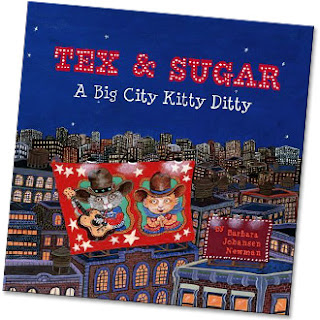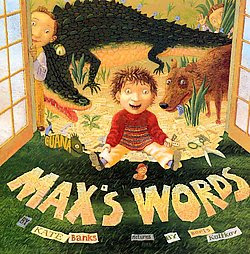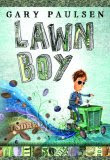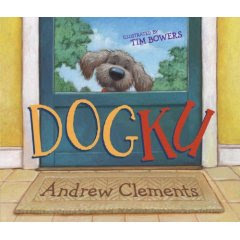plethora of poems
I did a review of this book here. This book is a collection of haiku about a family who gets a dog and their adjustment to each other. Each page contains a different haiku, but they are linked to tell the story.
I love picture book biographies, and this is a great biography of Issa, a traditional Japanese haiku poet who lived in the late 1700s-early 1800s. The text is biographical with translated haikus by Issa interspersed throughout. Amazingly, the haiku fit with the text well. The back of the book includes an author’s note, information about translation, and information about haiku.
a list of good haiku books
read them with a friend
read them with a friend
I really do love haiku books. I have mentioned this in a previous post, and I know that you have seen many of my haiku published on this blog for the very first time. Today I give you an annotated version of my favorite haiku books. Some I have reviewed before, but I thought it might be nice to have a list of all of the books (and short descriptions) all in one place.
Translated by Sylvia Cassedy and Kunihiro Suetake
Illustrated by Molly Bang
Illustrated by Molly Bang
HarperCollins, 1992
Out of print
This book had previously been published in the 1960s but was rereleased with Molly Bang’s collage illustrations. The illustrations really make this book unique. The book actually opens up vertically—you have to turn it on its side. The poems are a collection of Japanese haiku that have been translated into English. They are all written along the top of the page in one long line, but the vertical illustrations made up of all kinds of items like material, cookies, buttons, rice, wire, and more really make this a “Bang” up book.
This book had previously been published in the 1960s but was rereleased with Molly Bang’s collage illustrations. The illustrations really make this book unique. The book actually opens up vertically—you have to turn it on its side. The poems are a collection of Japanese haiku that have been translated into English. They are all written along the top of the page in one long line, but the vertical illustrations made up of all kinds of items like material, cookies, buttons, rice, wire, and more really make this a “Bang” up book.
Illustrated Tim Bowers
Simon and Schuster, 2007
I did a review of this book here. This book is a collection of haiku about a family who gets a dog and their adjustment to each other. Each page contains a different haiku, but they are linked to tell the story.
by Patricia Donegan
Tuttle Publishing, 2003
This book is part of “Asian Arts and Crafts for Kids” series. This is a step-by-step writer’s guide to writing haiku geared toward kids. It gives a short history of haiku, and then guides kids through all of the key elements in a haiku (form, seasonal word, here and now, etc). There are dozens of examples of haiku throughout the book. It also guides young writers through five projects: writing a haiku, seasonal haiku, haibun, haiga, and renga. There is a glossary, a resource guide with Internet links, and a bibliography. This would make a great book for a serious young writer/poet, but it is a very useful haiku resource for teachers too.
Tuttle Publishing, 2003
This book is part of “Asian Arts and Crafts for Kids” series. This is a step-by-step writer’s guide to writing haiku geared toward kids. It gives a short history of haiku, and then guides kids through all of the key elements in a haiku (form, seasonal word, here and now, etc). There are dozens of examples of haiku throughout the book. It also guides young writers through five projects: writing a haiku, seasonal haiku, haibun, haiga, and renga. There is a glossary, a resource guide with Internet links, and a bibliography. This would make a great book for a serious young writer/poet, but it is a very useful haiku resource for teachers too.
Illustrated by Kazuko G. Stone
Simon and Schuster, 1998
Simon and Schuster, 1998
I love picture book biographies, and this is a great biography of Issa, a traditional Japanese haiku poet who lived in the late 1700s-early 1800s. The text is biographical with translated haikus by Issa interspersed throughout. Amazingly, the haiku fit with the text well. The back of the book includes an author’s note, information about translation, and information about haiku.
by Penny Harter
Illustrated by Jeffrey Greene
Simon and Schuster, 1994.
This book is a collection of linked haiku that tell a story (like Dogku). A collection of haiku all about night.
Haiku by Issa
Illustrated by G. Brian Karas
Scholastic, 2007
I love G. Brian Karas and I love haiku books, so this was a must buy for me. Issa is a Japanese poet well known for his haiku. I did a review of this book here. Haiku translated from Japanese are arranged by season in this book.
I love G. Brian Karas and I love haiku books, so this was a must buy for me. Issa is a Japanese poet well known for his haiku. I did a review of this book here. Haiku translated from Japanese are arranged by season in this book.
Scholastic, 2004
One of the best haiku references I have come across. It was my bible when I was learning how to write haiku so I could teach my students how to write haiku. It also includes instructions for other types of poems as well.
One of the best haiku references I have come across. It was my bible when I was learning how to write haiku so I could teach my students how to write haiku. It also includes instructions for other types of poems as well.
Selected by Paul Janeczko
Photographs by Henri Silberman
Orchard, 2000
I use this book all of the time. I love to have students picture the haiku in their head while I read it to them, then show them the photographs that accompany them. The illustrations are fabulous black and white photos of scenes in a city. Janeczko explains in the introduction that haiku are usually nature poems, but that the city makes great subject matter for poetry too. Janeczko has collected haiku from dozens of well known poets in this collection.
I use this book all of the time. I love to have students picture the haiku in their head while I read it to them, then show them the photographs that accompany them. The illustrations are fabulous black and white photos of scenes in a city. Janeczko explains in the introduction that haiku are usually nature poems, but that the city makes great subject matter for poetry too. Janeczko has collected haiku from dozens of well known poets in this collection.
Illustrated by Chris Manson
Atheneum, 1995
The illustrations done in woodcuts are very simple and with muted colors, but they illustrate the simplicity of the haiku beautifully. This collection of haiku is all written in the traditional seasonal haiku format. A good book to add to a collection to have when teaching children what traditional, seasonal haiku is all about.
The illustrations done in woodcuts are very simple and with muted colors, but they illustrate the simplicity of the haiku beautifully. This collection of haiku is all written in the traditional seasonal haiku format. A good book to add to a collection to have when teaching children what traditional, seasonal haiku is all about.
Compiled by Grace Lin and Robert Mercer
Viking, 2005
This gorgeous collection of haiku is accompanied by snowflakes illustrated by various artists for Robert’s Snow (which proceeds go to Dana-Farber Cancer Institute). This is a beautiful celebration of haiku and art and is written and illustrated by many famous children’s books authors and illustrators. My only wish for this book? It is small gift book format. I would love for it to be a regular size picture book to show off the beauty even more. One of my favorite collections!
This gorgeous collection of haiku is accompanied by snowflakes illustrated by various artists for Robert’s Snow (which proceeds go to Dana-Farber Cancer Institute). This is a beautiful celebration of haiku and art and is written and illustrated by many famous children’s books authors and illustrators. My only wish for this book? It is small gift book format. I would love for it to be a regular size picture book to show off the beauty even more. One of my favorite collections!
Illustrated by Ted Rand
Greenwillow, 2004
I did a review of this book here. Jack Prelutsky writes a haiku about different animals on each page. The fun thing about this book is that you can read them aloud to students (or show them poem) and have them guess what he is writing about, then show students the illustrations. They are riddle-like haiku.
I did a review of this book here. Jack Prelutsky writes a haiku about different animals on each page. The fun thing about this book is that you can read them aloud to students (or show them poem) and have them guess what he is writing about, then show students the illustrations. They are riddle-like haiku.
Illustrated by Demi
Atheneum, 1997
This is another picture book biography of a traditional Japanese poet. This is the life of Basho, who lived and wrote haiku in Japan in the 1600s. The biographical prose is also interspersed with translated haiku (like the Issa book). The illustrations are beautifully done ink drawings on textured paper.
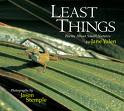 Least Things: Poems about Small Natures
Least Things: Poems about Small Natures
This is another picture book biography of a traditional Japanese poet. This is the life of Basho, who lived and wrote haiku in Japan in the 1600s. The biographical prose is also interspersed with translated haiku (like the Issa book). The illustrations are beautifully done ink drawings on textured paper.
 Least Things: Poems about Small Natures
Least Things: Poems about Small Naturesby Jane Yolen
Photographs by Jason Stemple
Boyds Mills Press, 2003
I love Jane Yolen because she is such a beautiful writer no matter what genre she writes in. This is no exception. She takes her son’s stunning photographs of things in nature and writes haiku about them. Also included is factual information about the animal in the photograph. This is a feast for the eyes and the poet’s heart.
Is your favorite haiku book missing? Please put a comment below and let me know. I’m always on the lookout for great haiku books.
Is your favorite haiku book missing? Please put a comment below and let me know. I’m always on the lookout for great haiku books.
The Poetry Friday roundup is at Literary Safari
Addendum:
How could I forget?
by Paul Janeczko and J. Patrick Lewis
Little, Brown, 2006
This is a hilarious collection of haiku. It doesn't follow the traditional nature content of Japanese haiku, but it still follows the format of haiku. These are lots of fun to read aloud. A lengthier review here.

 Dogku
Dogku



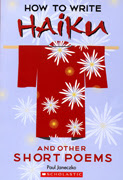
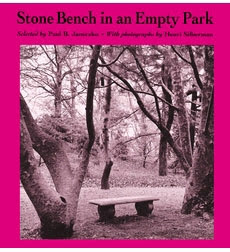
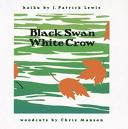
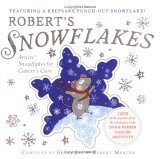

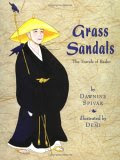

 Wing Nuts: Screwy Haiku
Wing Nuts: Screwy Haiku Mama’s Saris
Mama’s Saris  My Mother’s Sari
My Mother’s Sari